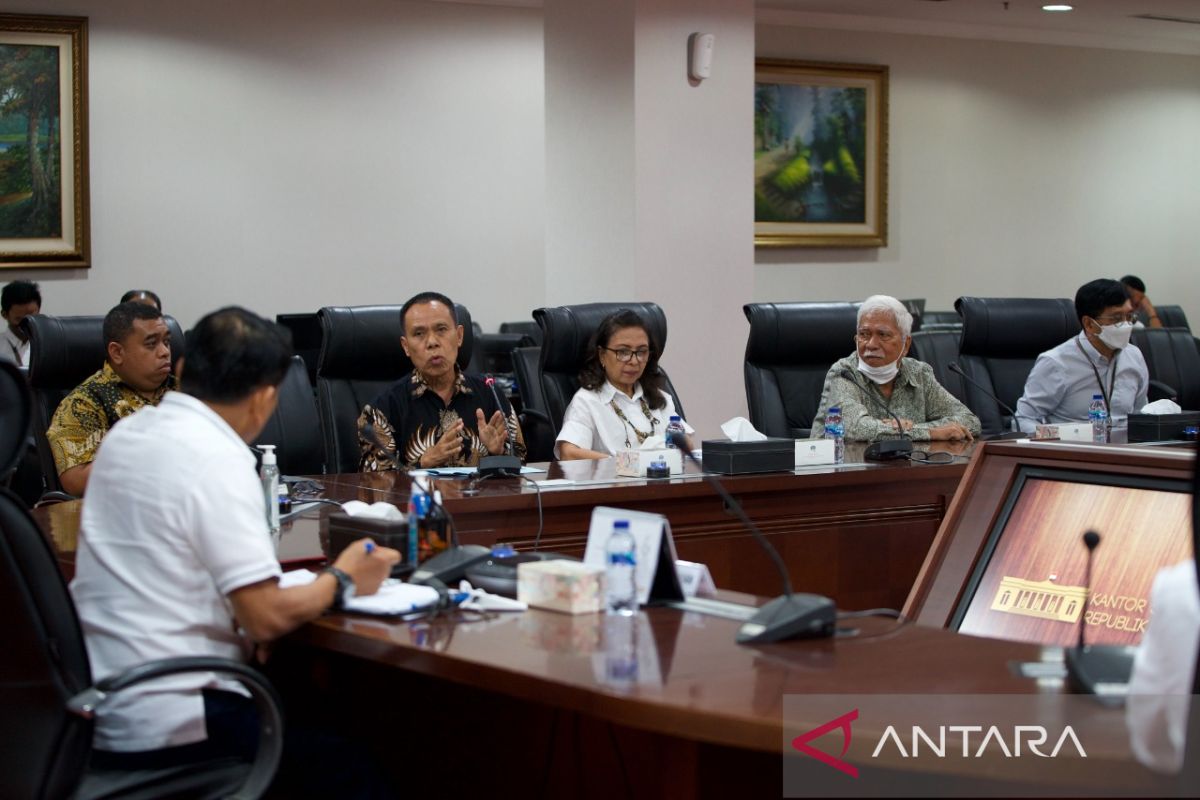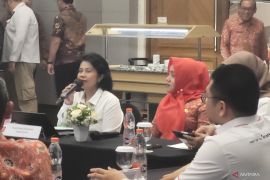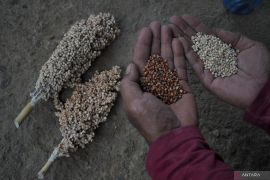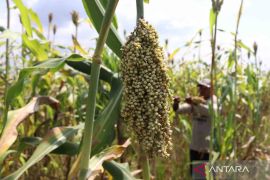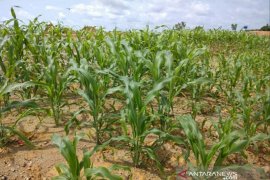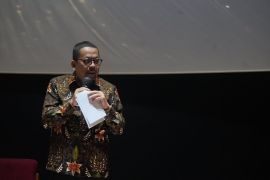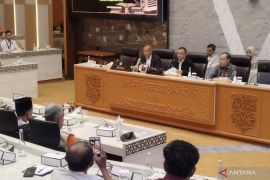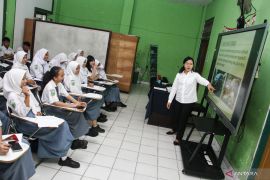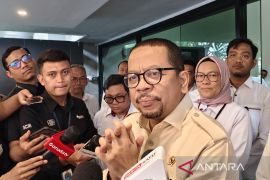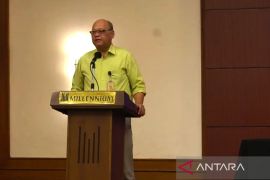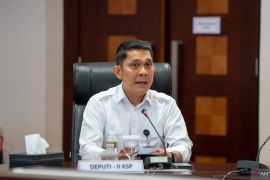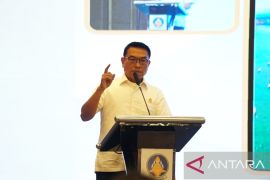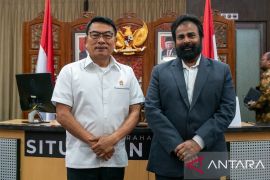There are research results that can increase the productivity of sorghum, right from being harvested after 90 days to being harvested after 70 daysJakarta (ANTARA) - Head of the Presidential Staff Office (KSP) Moeldoko has collaborated with technology and food experts to develop sorghum from the cultivation aspect to the industrialization stage.
To this end, Moeldoko, here on Friday, invited experts to the Bina Graha Building, the Presidential Palace Complex, to discuss the prospects of developing sorghum and the commodity's research in the cultivation and industrialization processes.
"This is a form of the government's seriousness in reviving this grain crop as an alternative food ingredient in Indonesia," Moeldoko noted in a written statement from the Presidential Staff Office (KSP).
The KSP head noted that President Joko Widodo (Jokowi) was also surprised to witness the potential to grow sorghum in Waingapu, East Nusa Tenggara.
“Even corn, green beans, and shallots planted there (Waingapu, NTT), failed (to grow). It is clear that sorghum can be relied on as an alternative food (source), so I am increasingly confident in the sorghum currently being developed in Waingapu,” he remarked.
Related news: Jokowi inspects sorghum harvest as alternative to tackle food crisis
He explained that the government was considering the process of sorghum cultivation up to the post-harvest process.
"There are research results that can increase the productivity of sorghum, right from being harvested after 90 days to being harvested after 70 days. In fact, the yield, which is usually three tons per hectare with technology, can be developed to 7-8 tons per hectare," Moeldoko pointed out.
Experts are said to welcome the government's views and goals since sorghum is considered to be a solution to poverty, environmental sustainability problems, and the food crisis.
In fact, nuclear power research institutions, under the auspices of the National Research and Innovation Agency (BRIN), have developed three superior varieties of sorghum seeds, specifically Pahat (Healthy Food), Samurai 1, and Samurai 2. The results of this research by Indonesian sorghum experts have been widely used by farmers in Africa.
“We have been wanting to develop this for a long time. Hence, Moeldoko's intention to invite us to talk about sorghum cultivation was the right moment. Hopefully, we would synergize through this government program, so we are ready to help programs that are currently running," academic from the University of Indonesia, Dr Ir. Kaseno, said as quoted from KSP's statement.
Related news: Sumba has potential to become Sorghum Island: KSP Chief
In addition, Kaseno said, sorghum was a zero-waste agricultural product, and every part of this commodity can be utilized.
Sorghum seeds can be made into rice and processed into flour, and the stems of sorghum can be processed into liquid sugar, crystal sugar, or bioethanol. Even after all these processes, the remaining stems, leaves, and roots of sorghum can be processed into agricultural fertilizers and animal feed.
“This sorghum can survive in marginal and critical land. Meanwhile, there are several marginal lands in Indonesia. Hence, with this sorghum, we believe that Indonesia can become self-sufficient in food," he affirmed.
On June 2, 2022, President Jokowi had paid a visit to witness the planted and harvested sorghum on 400 hectares of cultivated land in Laipori Village, East Sumba District, East Nusa Tenggara (NTT).
The president's visit to East Sumba is related to the government's efforts to find alternative sources of food as a follow-up to the warning of the United Nations Food and Agriculture Organization (FAO) about the threat of a global food crisis due to climate change.
Related news: Sorghum, nutrient-rich alternative to rice
Related news: Sorghum safe, healthy alternative food: Moeldoko
Translator: Indra AP, Azis Kurmala
Editor: Fardah Assegaf
Copyright © ANTARA 2022
